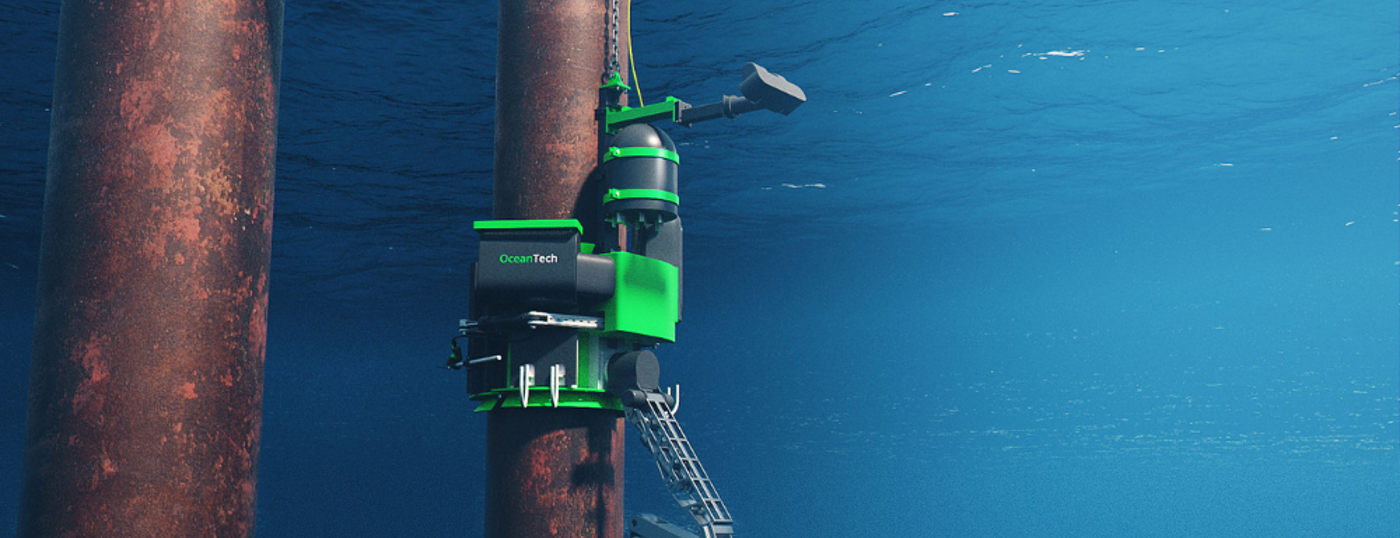Corrosion and material deterioration are ongoing challenges for offshore operators. Harsh environmental conditions, such as high pressures and corrosive saltwater, can lead to a reduction in functional performance and service life. On caisson structures specifically, corrosion may cause damage to the extent where caissons fall off and sink to the ocean floor. It can also cause leaks in pipes, valves, and fittings that make up the fire suppression system, making it difficult for the system to function properly. This can lead to severe consequences in the event of emergencies such as fires, blowouts, well control incidents, and natural disasters.
Caisson inspection challenges
Caisson structures require frequent inspections to maintain the integrity and safety of the rig. However, obtaining accurate data has proven to be a big challenge for operators. The methods used to collect data have not always been reliable.
There are obvious inhibitors to obtaining an accurate assessment. As caissons are located in hard-to-reach areas, access can be an issue. Also, where this is relevant, a firewater pump inside the caisson must be removed prior to performing inspections. This may disrupt operations. Further, marine growth may build up inside and outside the caisson, requiring cleaning using specialised equipment such as pressure washers, scrapers, or brushes prior to any inspection work.
Offshore environments are also often harsh and unpredictable, with strong currents, high waves, and poor visibility. These conditions can make it difficult to perform inspections. They also pose safety challenges for divers and climbers and create difficulties for remotely operated underwater vehicles (ROVs). ROVs perform well at greater depths, but the unpredictable conditions in the splash zone may cause damage to the vessel.
The splash zone conditions tend to get even rougher during the winter months. Storms and high winds increase the intensity of waves. Lower temperatures can also cause changes in water density, leading to even stronger currents and waves.
Robotised inspection solutions for all seasons
Traditionally, the oil and gas industry has used visual inspection techniques to assess caissons. Although visual inspections are still an important part of the process, new techniques and tools have been developed to obtain more accurate assessments. Ultrasonic corrosion testing has become the standard tool for many service companies. Other common techniques include eddy current testing, 3D laser scanning, and ROVs for external deepwater inspections.
At OceanTech, we offer a wide range of field-proven technologies and inspection techniques that have been refined to cope with the challenging environment in the splash zone:
- General visual inspection (GVI)
- Close visual inspection (CVI)
- Cathodic protection (CP) measurements
- Ultrasonic thickness (UT) measurements
- Pulse eddy current (PEC) thickness measurements
- Eddy current surface crack inspection
Our robotic solutions provide a fixed and stable platform that enables the deployment of sensors, cameras, probes, and other inspection tools. All tools and techniques are designed to avoid any use of divers, ROVs, and support vessels.
When assessing the condition of caissons, we typically perform visual inspections and pulsed eddy current (PEC) thickness measurements. After thoroughly cleaning areas with significant marine growth, the PEC technique exhibits a remarkable level of accuracy in measuring wall thickness. By using vertical access tools, such as our clamp access tool (CAT), the robotic arm can measure the thickness of all steel pipes, check for possible leaks, and discover any degradation. The CAT, which can be lowered all the way down to approximately 50 metres below the waterline, performs well in any weather condition.
When performing caisson inspections, an automated PEC scanning device is mounted to the CAT to measure wall thickness loss and holes – both on the inside and outside of the caisson. It can inspect both dry and submerged sections, and welds from corroded surfaces to look for fatigue cracking. As a rule of thumb, we recommend performing measurements every 5 metres (depending on client needs) to map both general corrosion and pitting corrosion.
As we continue to develop and refine our tools, the quality of the inspection data improves. This provides operators with more accurate assessments, enabling them to make better decisions on how to extend the life of their offshore assets.
Significant efficiency and HSE gains
Our inspection solutions are ideal for verifying the integrity of offshore structures prior to repairs or modification work. Wall thickness measurements and corrosion mapping is an important part of this process and ensures the safety, reliability, and longevity of any offshore structure.
As our equipment allows unmanned work close to caisson structures, or when entering confined spaces, we offer significant efficiency and HSE gains. The fact that our clients increasingly use our inspection tools in all seasons also frees up capacity during the busy summer months. Many offshore activities, such as exploration, drilling, and maintenance, tend to increase when weather conditions are favorable. As a result, demand for personnel, vessels, and equipment can increase, leading to capacity constraints and limitations. With OceanTech’s robotised solutions, operators are able to perform important inspection and maintenance work throughout the year.
Our projects are often a combination of cleaning, inspection, repair, and modification work, which are offered as a turnkey solution. In addition, we have the capability to handle all rigging and lifting activities as a part of the total scope of work. This is managed through our strategic partners who have comprehensive experience in splash zone operations.
